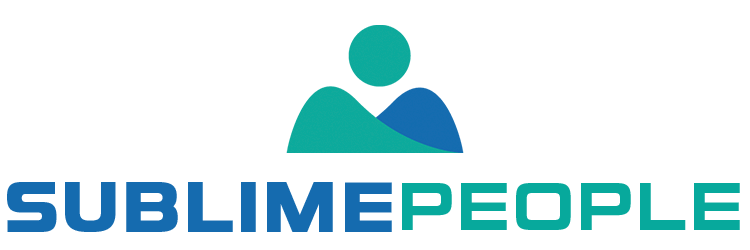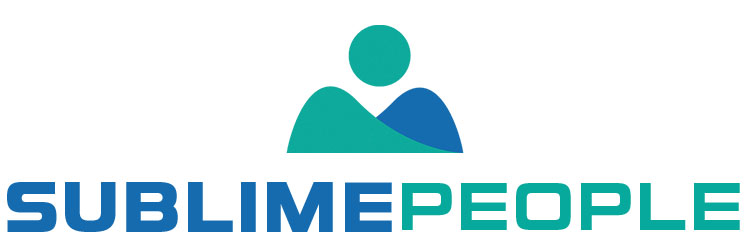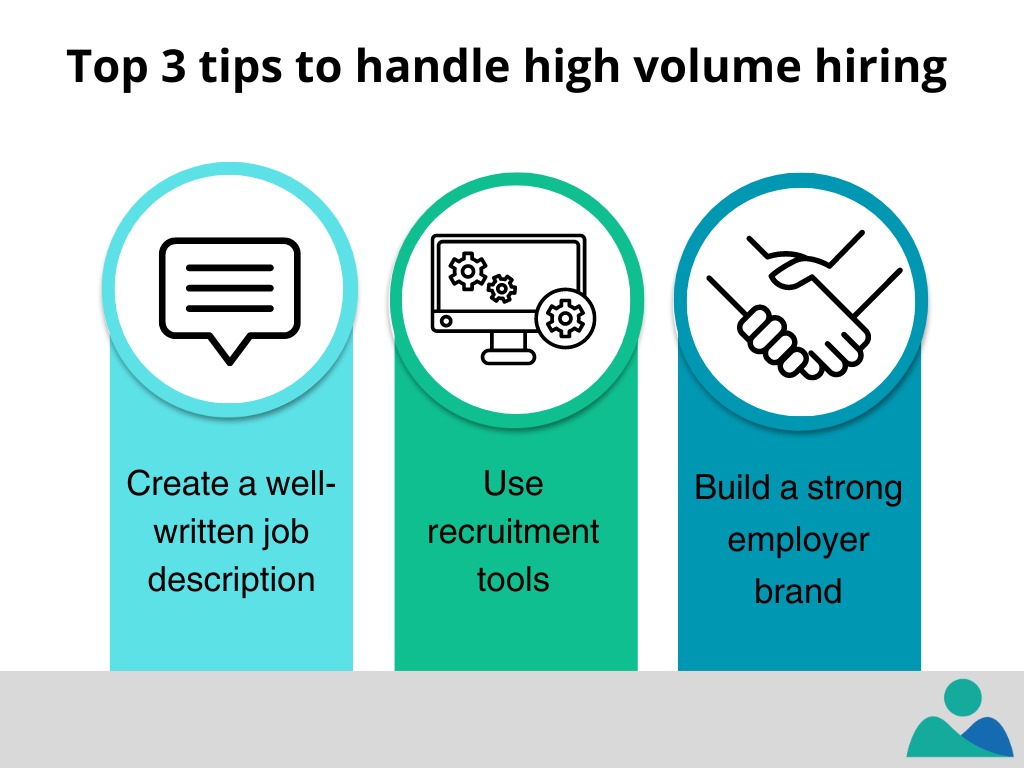A reliable plan is essential if you’re ready to plunge into high-volume hiring. Businesses often use high-volume recruitment strategies when experiencing accelerated growth, during seasonal peaks, and when opening new offices. In this article, we’ve compiled six tips to help you succeed in your next high-volume hiring. From the importance of a well-laid-out job description to data collection, these tips will help you source great talent without sacrificing speed or the quality of your hire.
In this Article:
What is high-volume hiring?
High-volume hiring refers to recruiting and hiring many employees in quick succession. This type of hiring often involves adapting traditional recruitment processes to fit a larger hiring scale, such as hiring from multiple job boards, utilizing recruitment tools, using recruitment advertising, and streamlining everything with an optimised process.
Typically, when you perform high-volume hiring, you recruit a large group of people for similar positions, ranging from entry-level roles to senior executives. However, you may also be hiring a large group for different types of positions.
High-volume hiring is essential to maintain a business’s growth, and it allows companies to quickly and efficiently fill job openings with qualified candidates, reducing hiring costs and increasing productivity. Focusing on candidate experience during high-volume hiring is important since things may be overlooked when things are moving fast. A streamlined hiring process is, therefore, very important.

Steps in a high volume recruitment process
Recruiting agencies often look for candidates who fill the exact roles and qualifications needed. They are needed because they specialise in hiring large numbers of people and can create a smooth hiring process for both candidates and hiring managers. The typical hiring process follows as:
- The hiring process typically begins with job postings on multiple job boards, followed by potential sourcing candidates through employee referrals, job conferences, online advertising and sourcing.
- After sourcing candidates, the recruiters or talent selection tools screen them and assess their qualifications. Candidates who pass the screening process are typically further checked by a hiring manager if they pass all qualifications for the job.
- Once suitable candidates have been identified, interviews are conducted, and offers are made to qualified applicants.
- The hiring process is usually completed with the hiring manager onboarding the new employees and introducing them to the company culture.
The hiring process for high-volume hiring is different from conventional hiring processes. A high-volume hiring process should aim to quickly and efficiently fill positions while hiring quality candidates. To achieve this, hiring managers should focus on creating an efficient hiring pipeline and leveraging job boards to reach out to more applicants.
If you can check the quality of the applicants fast, you can hire a larger amount of higher-quality candidates. Targeted advertising and landing pages can help you with this.
1. Start with a well-written job description
Before hiring, it is crucial to have a comprehensive and accurate job description to attract the right candidates. A good job description should include essential qualifications, job responsibilities, and an overview of the hiring process. Additionally, it should clearly communicate what makes your job special and desirable, so potential candidates will be drawn to it.
2. Utilize job boards and recruitment advertising
Maximize hiring efficiency by posting on multiple job boards and utilizing recruitment advertising. Job boards allow employers to quickly post job openings, saving hiring managers time and energy. Job seekers can easily search for open positions in their field, making it easier for hiring managers to find qualified applicants. Use Job boards and other recruiting strategies like recruitment advertising to reach a larger pool of potential candidates.
3. Maintain a strong employer brand
Your hiring process should reflect your company’s values and culture. Make sure to focus on the candidate experience, and offer a hiring process that is both transparent and friendly. Doing so will help ensure your brand meets and exceeds job seekers’ expectations.
4. Automation, AI, and Filtering
Use effective methods to be faster and more efficient during the filtering process. Optimised tools can help hiring managers quickly identify qualified candidates by analyzing resumes and applications. Using AI is not necessary, but some will find it useful to send out emails and summarising cvs.
5. Employee Referrals
Referrals from existing employees can often provide hiring managers with qualified candidates already familiar with the company culture. Employee referrals can also benefit hiring managers as they require minimal resources and provide insight into potential candidates.
6. Leverage data and analytics to optimize
Use Data and analytics to measure hiring success and identify weak points in the hiring process. By collecting data, you can track hiring metrics like time-to-hire and cost-per-hire and the effectiveness of recruitment tools. This data can be used to optimize hiring processes and ensure hiring managers are making the best hiring decisions.
A word from SublimePeople
Effective high-volume hiring requires a thoughtful, well-executed plan. By following the tips above, you can avoid many mistakes companies make when trying to scale their workforce quickly. With strategic planning and execution, volume hiring can be a successful way to grow your company.
Are you thinking about starting a volume hiring initiative? What challenges do you anticipate? How do you plan to overcome them? If you have time, SublimePeople would love to hear about them, and help you fix them. Contact us here.
You may also be interested in 4 Useful Recruitment Techniques





